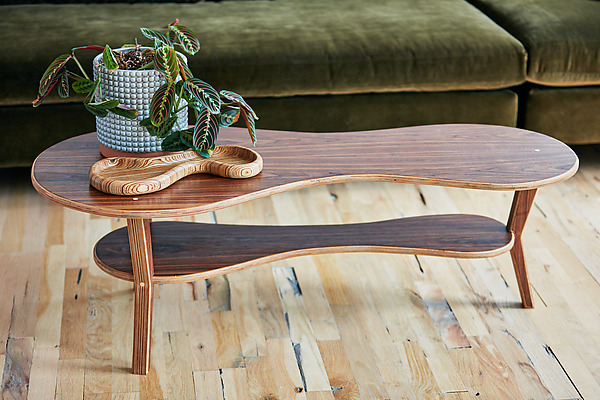A Story Behind the Table
Emma had always admired her grandfather’s home warm light, teak wood shelves, and a low-profile coffee table at the center of it all. When he passed, she inherited that very table. It wasn’t flashy, but there was something magnetic about its clean lines, curved edges, and aged wood. That piece, she discovered, was a mid-century modern cocktail table a style now gracing design magazines, Pinterest boards, and the homes of people seeking to blend form with function.
As Emma redecorated her flat in Brighton, that table became the anchor for her aesthetic. And just like that, she joined a growing movement of design lovers bringing timeless mid-century touches into modern living.
What Is a Mid-Century Modern Cocktail Table?
A mid-century modern cocktail table refers to a low-height central table typically placed in front of a seating arrangement, designed with the aesthetics of the mid-20th century in mind, primarily from the 1940s to the 1960s. These tables stand out due to the following:
- Sleek, clean lines
- Tapered wooden legs
- Minimalist form meets functionality
- Natural materials like teak, walnut, or glass
Their goal? To make everyday living more beautiful and effortless. Not over-designed. Not too ornate. Just balanced.
Key Characteristics of the Style
Here’s how to identify a genuine or well-replicated mid-century modern cocktail table:
Natural Materials
These tables often use rich woods like walnut, rosewood, or teak, showcasing visible grain and warmth.
Geometric Simplicity
Designs emphasize straight or slightly curved lines, reflecting the era’s love for geometry and simplicity.
Elevated off the Ground
Tapered or peg legs elevate the table, creating an essential sense of openness and flow in compact living spaces.
Why Mid-Century Design Still Matters
Even though the movement began over 70 years ago, the mid-century modern aesthetic remains influential today. Its enduring appeal reassures us that it strikes a rare balance between art and function, making it a timeless choice for any home.
Modern homes, especially open-concept ones, benefit from mid-century pieces because:
- They don’t overpower the room
- They integrate with other styles, Scandinavian, boho, industrial
- Their durability makes them long-lasting investments
Whether you’re setting down a drink, placing books, or decorating with flowers, these tables do their job while looking effortlessly stylish.
How to Style a Mid-Century Modern Cocktail Table?
To style mid-century-modern cocktail tables, use minimalist decor like a ceramic vase, a stack of vintage books, a sculptural tray, and low-maintenance plants.
The key is balance, avoiding clutter, focusing, and using pieces that echo the table’s clean lines.
Popular Shapes and Designs
Depending on your space and needs, there are several styles of mid-century modern cocktail tables to choose from:
- Oval/Noguchi-style: Organic and sculptural
- Rectangular with open shelving: Great for books and baskets
- Round pedestal: Space-saving with a touch of elegance
- Glass tops with wooden bases: A classic mid-century combo
Each shape fits differently into your home, so consider the flow of your furniture and available space.
Where It All Began: The Mid-Century Movement
The mid-century movement emerged post-World War II, a time of innovation, new materials, and a desire for simpler living. Designers like Charles and Ray Eames, Isamu Noguchi, and Florence Knoll revolutionized how we think about furniture.
For an in-depth look at this design era, visit the Wikipedia page on Mid-century Modern.
This movement emphasized accessibility, functionality, and beauty values still guiding modern design choices.
Tips for Buying the Right Table
If you’re shopping for a mid-century modern cocktail table, consider:
- Material quality: Real wood over veneer when possible
- Authenticity: Check for original maker marks or trusted reproductions
- Size: Match the table’s length to two-thirds the length of your sofa
- Height: Ideally 1–2 inches lower than your sofa seat
Blending with Other Decor Styles
The best part about mid-century design? It’s incredibly adaptable. Here’s how it plays well with other interior themes:
- Modern: Use black and white tones for a sleek contrast
- Boho: Add colorful cushions and natural textiles nearby
- Scandinavian: Embrace light woods and neutral color palettes
- Industrial: Mix it with exposed brick or metallic lamps
The table acts as a bridge, tying various styles together with grace.
Conclusion: Why This Table Still Shines
As Emma sips her coffee on a quiet Sunday morning, she admires the center of her living room, a mid-century modern cocktail table. It’s not just a piece of furniture. It’s a slice of history. A reflection of timeless design. A table that’s held books, drinks, and now, memories. In a world of fast furniture, this cocktail table stands out, aging with dignity and charm, a testament to the enduring quality of mid-century modern design.






